10 Most Common 6th Grade PARCC Math Questions
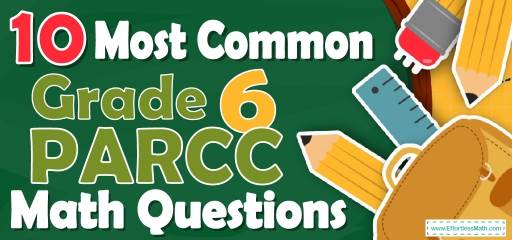
In the days leading up to the 6th Grade PARCC test, the first and most important issue for students is to be sufficiently prepared to participate in the exam 6th Grade PARCC test sessions and to answer the questions correctly. If students do not feel this confidence, they will become anxious and will not be able to answer even if they know all the topics and subjects. One of the methods that calm students and boosts their confidence in this issue is the study of the 6th Grade PARCC sample test questions. In this article, we have provided your students with the opportunity to have 10 common math test questions of 6th Grade PARCC along with their exact answers.
Make sure to follow some of the related links at the bottom of this post to get a better idea of what kind of mathematics questions your students need to practice.
The Absolute Best Book to Ace 6th Grade PARCC Math Test
10 Sample 6th Grade PARCC Math Practice Questions
1- What is the equation of a line that passes through points \((0, 4)\) and \((2, 8)\)?
A. \(y = x\)
B. \(y = x + 4\)
C. \(y = 2x + 4\)
D. \(y = 2x – 4\)
2- What is the volume of a box with the following dimensions?
Height \(= 6\) cm , Width \(= 7\) cm, Length \(= 9\) cm
A. \(63 \space cm^3\)
B. \(126\space cm^3\)
C. \(189\space cm^3\)
D. \(378\space cm^3\)
3- Anita’s trick–or–treat bag contains 14 pieces of chocolate, 15 suckers, 16 pieces of gum, 20 pieces of licorice. If she randomly pulls a piece of candy from her bag, what is the probability of her pulling out a piece of sucker?
A. \(\frac{1}{13}\)
B. \(\frac{3}{13}\)
C. \(\frac{14}{65}\)
D. \(\frac{16}{65}\)
4-
In the following rectangle, which statement is false?
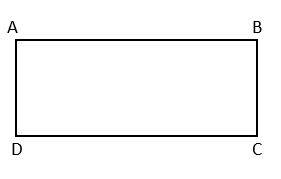
A. AD is parallel to BC
B. The measure of the sum of all the angles equals \(360^\circ\).
C. Length of AB equal to length DC.
D. AB is perpendicular to AC.
5- The area of a rectangular yard is 90 square meters. What is its width if its length is 15 meters?
A. 10 meters
B. 8 meters
C. 6 meters
D. 4 meters
6- Which statement about 4 multiplied by \(\frac{3}{5}\) must be true?
A. The product is between 1 and 2
B. The product is greater than 3
C. The product is equal to \(\frac{75}{31}\)
D. The product is between 2 and 2.5
7- Which of the following lists shows the fractions in order from least to greatest?
\(\frac{3}{4}, \frac{2}{7}, \frac{3}{8} , \frac{5}{11}\)
A. \(\frac{3}{8}, \frac{2}{7}, \frac{3}{4}, \frac{5}{11}\)
B. \(\frac{2}{7}, \frac{5}{11}, \frac{3}{8}, \frac{3}{4}\)
C. \(\frac{2}{7}, \frac{3}{8}, \frac{5}{11}, \frac{3}{4}\)
D. \(\frac{3}{8}, \frac{2}{7}, \frac{5}{11}, \frac{3}{4}\)
8- A car costing $300 is discounted \(10\%\). Which of the following expressions can be used to find the selling price of the car?
A. \((300)(0.4)\)
B. \(300-(300×0.1)\)
C. \((300)(0.1)\)
D. \( 300-(300×0.9)\)
9- What is the missing price factor of number 420?
\(420=2^2×3^1×…\)
A. \(2^2×3^1×5^1×7^1\)
B. \(2^2×3^1×7^1×9^1\)
C. \(1^2×2^3×2^1×3^1\)
D. \(3^2×5^1×7^1×9^1\)
10- If the area of the following trapezoid is equal to A, which equation represent \(x\)?
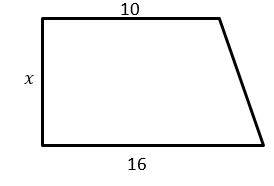
A. \(x = \frac{13}{A}\)
B. \(x = \frac{A}{13}\)
C. \( x=A+13\)
D. \( x=A-13\)
Best 6th Grade PARCC Math Practice Resource for 2022
Answers:
1- C
The slope of the line is:
\(\frac{y_2-y_1}{x_2-x_1 }= \frac{8 – 4}{2 – 0}=\frac{4}{2}=2\)
The equation of a line can be written as:
\( y-y_0=m(x – x_0 )→y-4 = 2(x – 0)→y-4 = 2x→y = 2x + 4\)
2- D
Volume of a \(box = length × width × height = 6 × 7 × 9 = 378\)
3- B
\(Probability = \frac{number \space of \space desired \space outcomes}{number \space of \space total \space outcomes}=\frac{15}{14+15+16+20}= \frac{15}{65}=\frac{3}{13}\)
4- D
In any rectangle, sides are not perpendicular to diagonals.
5- C
Let y be the width of the rectangle. Then; \(15×y=90→y=\frac{90}{15}=6\)
6- D
\( 4×\frac{3}{5}=\frac{12}{5}=2.4 \)
\( 2.4>2\)
\( 2.4<3\)
\( \frac{75}{31}=2.419≠2.4\)
\(2<2.4<2.5 \) This is the answer!
7- C
Let’s compare each fraction:
\(\frac{2}{7}< \frac{3}{8}< \frac{5}{11} < \frac{3}{4}\)
Only choice C provides the right order.
8- B
To find the discount, multiply the number (\(100\%\)- rate of discount)
Therefore; \(300(100\%-10\%)=300(1-0.1)=300-(300×0.1)\)
9- A
\(420=2^2×3^1×5^1×7^1\)
10- B
The area of the trapezoid is: area= \(\frac{(base 1+base 2)}{2}×height= (\frac{10 + 16}{2})x = A\)
\( →13x = A→x = \frac{A}{13}\)
Looking for the best resource to help you succeed on the Grade 6 PARCC Math test?
The Best Books to Ace 6th Grade PARCC Math Test
Common Core Math Exercise Book for Grade 6 Student Workbook and Two Realistic Common Core Math Tests
Related to This Article
More math articles
- Top 10 Tips to Overcome CLEP College Algebra Anxiety
- How to Work with the Intermediate Value Theorem?
- Parent Functions
- How to Multiply Binomials? (+FREE Worksheet!)
- How to Solve Scientific Notation? (+FREE Worksheet!)
- The Ultimate 6th Grade MAP Math Course (+FREE Worksheets)
- Full-Length ISEE Middle Level Math Practice Test
- Area of a Parallelogram
- The Ultimate 7th Grade Scantron Math Course (+FREE Worksheets)
- 5 Best Laptops for Math Students
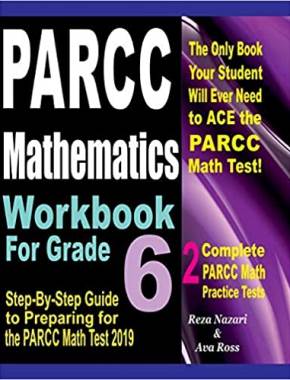
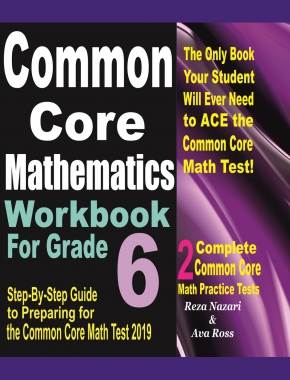
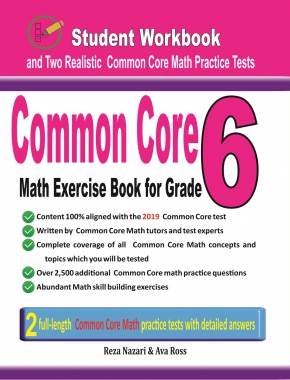
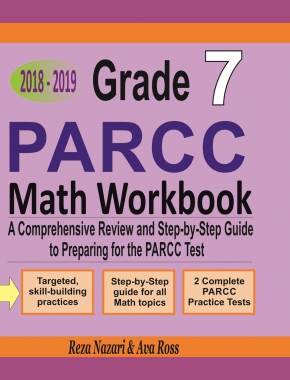

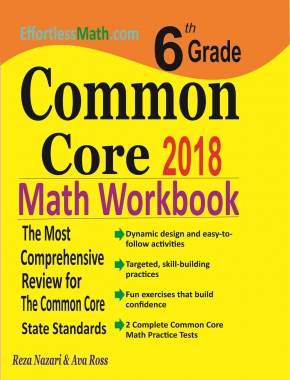
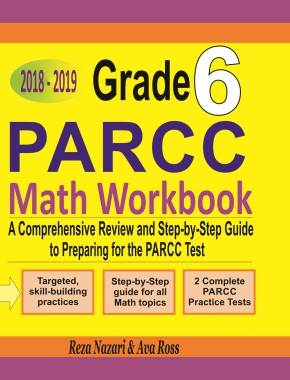
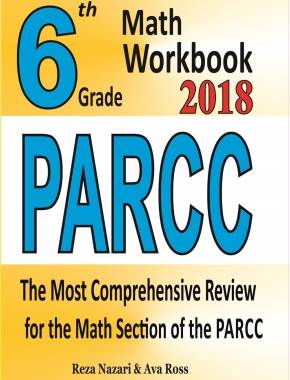
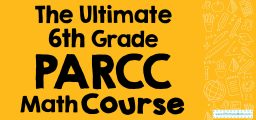
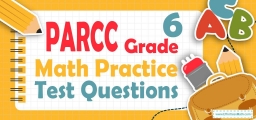
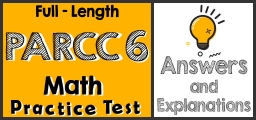
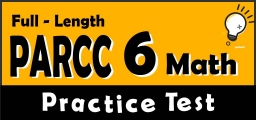
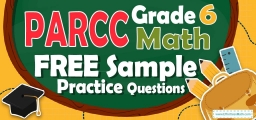
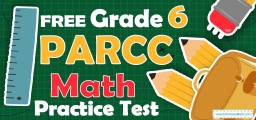

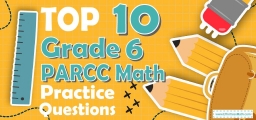
What people say about "10 Most Common 6th Grade PARCC Math Questions - Effortless Math: We Help Students Learn to LOVE Mathematics"?
No one replied yet.